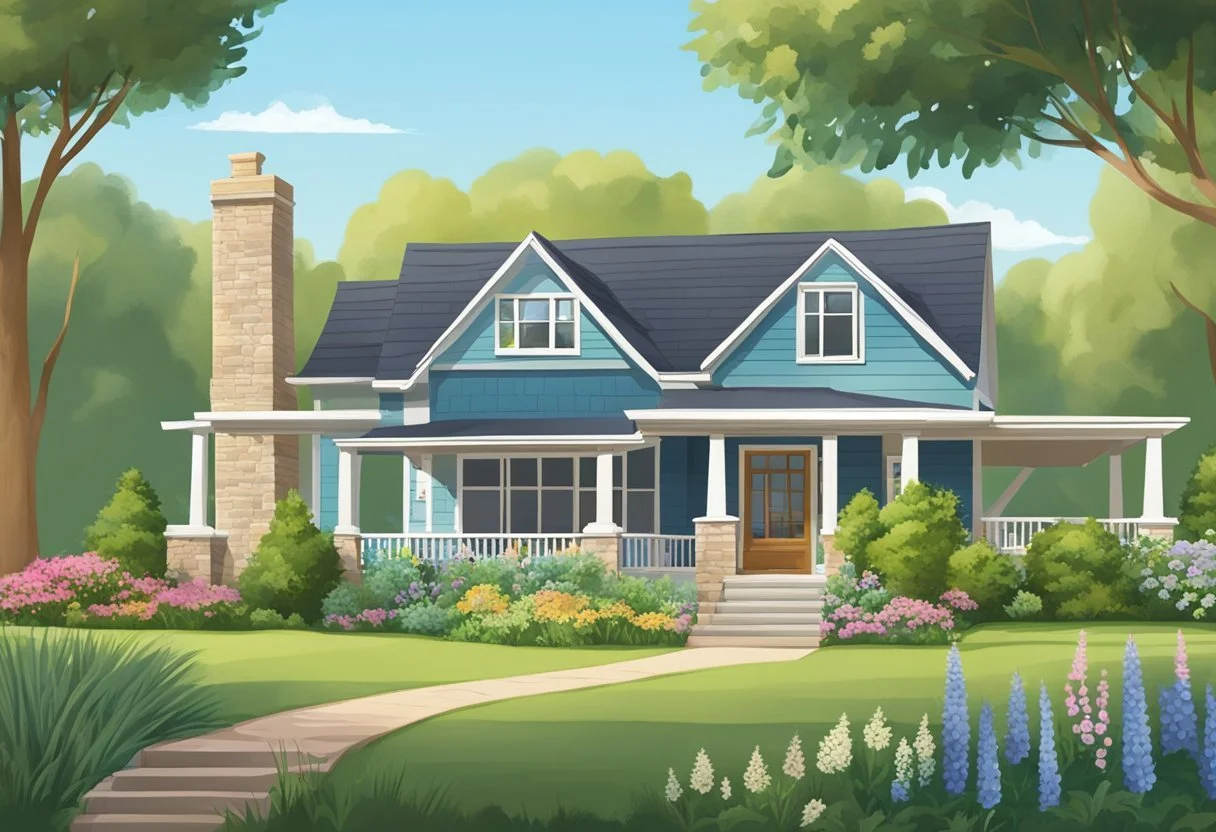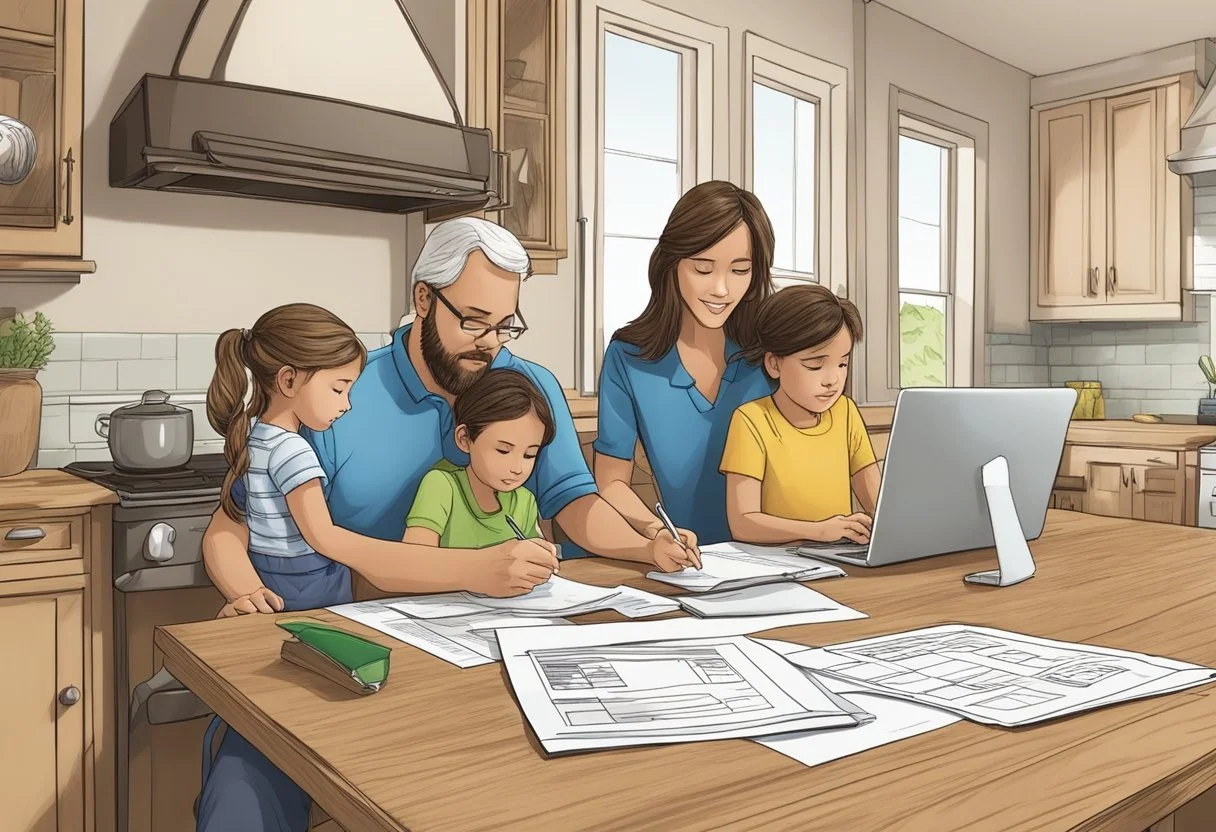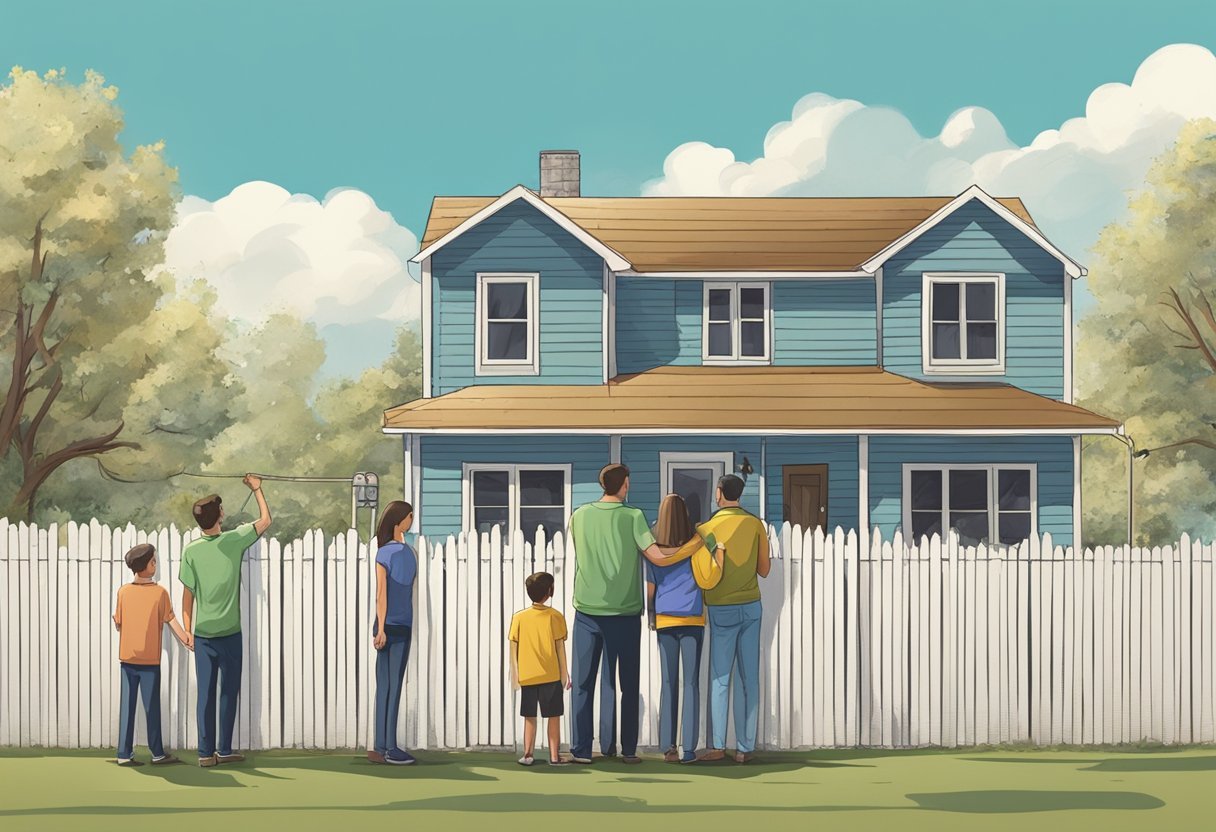South Dakota Homestead Exemption
Key Benefits and Eligibility Criteria
This article is part of our guide on the Homestead Exemption by State
In South Dakota, the homestead exemption serves as an essential component of property tax relief, offering homeowners protection against financial distress. This legal provision safeguards a portion of a property's assessed value from taxation, easing the financial burden on eligible homeowners. As property taxes increase, the homestead exemption can play a vital role in helping families maintain their homes and avoid hardships.
South Dakota's homestead exemption is specifically designed to benefit those who occupy a property as their primary residence. By reducing the taxable value of a home, the exemption lowers the total amount owed in property taxes, making homeownership more accessible and affordable for residents. This policy aims to promote stability and growth within communities, empowering residents to invest in their properties for the long-term.
To take full advantage of the South Dakota homestead exemption, homeowners must meet specific criteria and deadlines set forth by the state. Understanding the requirements and application process, as well as the financial implications of the exemption, is crucial for homeowners to maximize their savings. As a result, the homestead exemption can contribute to a more prosperous and financially secure future for South Dakota residents.
Understanding Homestead Exemption
Legal Foundation
The concept of a homestead exemption finds its roots in the state and federal laws of the United States. Designed to protect homeowners from losing their homes due to economic hardships or unforeseen circumstances, these exemption laws offer a measure of financial relief to qualified homeowners. In South Dakota, the homestead exemption is governed by state laws specified in the South Dakota Codified Laws.
Homestead Exemption Law
Under the South Dakota Homestead Exemption law (SDCL 43-31-1 to 43-31-26), a designated portion of a homeowner's property is exempt from being forcibly sold or seized to pay off certain types of debt. The exempt amount is:
Up to $60,000 for single residents
Up to $170,000 for residents with a family or legal dependents
It is important to note that the exemption is not applicable to all types of debt. Examples of exempt debts include:
Outstanding property taxes
Unpaid mortgages or other loans secured by the property
Debts incurred prior to the establishment of the homestead
Eligibility Criteria
To qualify for the South Dakota Homestead Exemption, homeowners must meet certain eligibility criteria:
The property must be the primary residence of the homeowner claiming the exemption
The homeowner must occupy the property as their primary residence for at least six consecutive months before filing for the exemption
Only one homestead exemption is allowed per household
Additionally, the homeowner must file a Homestead Exemption Application with their local county Register of Deeds. The application must include necessary documentation, such as proof of residency and a legal description of the property.
Application Process
Documentation Requirements
To apply for a homestead exemption in South Dakota, applicants must provide the necessary documentation to prove their eligibility. Required documents include:
Proof of Ownership: Applicants must provide proof of ownership of the property for which they are claiming the exemption. This could be a deed or any other legal document that demonstrates ownership.
Proof of Residency: Applicants must prove that they are residents of South Dakota. This can be done by providing a valid South Dakota driver's license, state-issued ID, or other documents that indicate residency, such as utility bills or tax statements.
Income Documentation: Since the homestead exemption is meant for low-income residents, applicants must provide proof of income. This may include a recent tax return, pay stubs, or any other documentation that demonstrates the applicant's income level.
Submission Guidelines
After gathering the necessary documentation, applicants should follow these submission guidelines:
Complete the application: Obtain the homestead exemption application form from the county assessor's office or the state's Department of Revenue website. Fill out the application accurately and completely, ensuring all required information is provided.
Attach required documents: Make sure to attach all required documentation, as outlined in the "Documentation Requirements" subsection.
Submit the application: Once the application and required documentation are prepared, submit them to the county assessor's office in the county where the property is located. It is important to pay attention to deadlines, as missing the deadline may result in a denied exemption for that year. Typically, the deadline for homestead exemption applications in South Dakota is November 1st.
It is essential for applicants to follow the application process and submit all required documentation in a timely manner to ensure their eligibility for the homestead exemption in South Dakota. By properly completing the application process, qualified low-income residents can benefit from the property tax relief provided by the homestead exemption.
Financial Implications
Property Tax Relief Programs
South Dakota offers property tax relief programs for eligible homeowners to ease their financial burden. One such program is the Property Tax Refund Program. This program allows qualifying individuals to receive a portion of their paid property taxes as a refund. It is especially helpful for low-income homeowners, senior citizens, and disabled individuals.
In order to qualify for the Property Tax Refund Program, homeowners must meet certain criteria such as:
Being a South Dakota resident
Owning the property for which they are seeking a refund
Having an annual income below the threshold set by the state
Additionally, there may be special provisions for veterans and their surviving spouses that could provide further property tax relief.
Bankruptcy Considerations
In the event of a bankruptcy, the South Dakota homestead exemption plays a crucial role in protecting a homeowner's residence from creditors. Under South Dakota bankruptcy laws, homeowners can claim a homestead exemption up to an unlimited dollar amount and protect their property from being sold to satisfy outstanding debts.
The homestead exemption serves to protect a homeowner's equity, which is the difference between the market value of the property and the outstanding mortgage balance. This exemption can significantly benefit those facing bankruptcy as it allows them to shield a portion or all of their home's equity from being seized by creditors.
However, it is important to note that the South Dakota homestead exemption does not cover all types of debts. For instance, the exemption will not protect the property in cases of unpaid property taxes or mortgage liens. As a result, homeowners should be cautious in their financial planning to avoid losing their property in the event of bankruptcy.
Homestead Exemption Benefits
Protection from Creditors
The South Dakota Homestead Exemption provides a valuable protection for homeowners, as it safeguards their primary residence from being seized by creditors. By exempting a certain amount of the home's value from the claims of creditors, homeowners can rest assured that their home will remain secure during financial difficulties. In South Dakota, the homestead exemption amount is up to $60,000 for a married couple and $30,000 for a single person, effectively preventing a forced sale of a property to satisfy debts below that threshold.
Income-Based Advantages
For those who qualify, South Dakota also offers income-based relief programs that provide additional financial benefits beyond the standard homestead exemption. Eligible homeowners may receive a reduced property tax rate if they are low-income, elderly, or disabled.
Specifically, South Dakota has the following income-based programs:
Property Tax Reduction: Homeowners who are aged 65 or older, or are disabled, and fall below an income threshold may have their property tax rate reduced. This program is tailored to provide relief for homeowners in need, preventing them from being priced out of their homes due to property tax increases.
Renters' Credit: Individuals who rent a property may still indirectly pay property tax through their rent. The Renters' Credit program aims to address this by providing income-qualified renters aged 65 or older, or disabled, with a rebate on their rent.
It is essential for South Dakota homeowners to be aware of these exemption benefits, as they may provide significant relief from financial stress and help preserve their primary residence during challenging times. By understanding and taking advantage of the homestead exemption and income-based programs, eligible individuals can maintain a stable living environment and protect their most valuable asset.
Limitations and Restrictions
Acreage and Property Size
In South Dakota, the homestead exemption law has certain limitations regarding the size and value of the exempted property. According to the statute, a homeowner can exempt up to 160 acres of rural land or one acre of urban land as their homestead. It is important to note that these acreage limits apply regardless of the property's value.
The homestead exemption law protects the homeowner's interest in their primary residence up to a $30,000 equity value. This means that homeowners with property worth more than the limit may still be at risk of losing some portion of their home's value in a bankruptcy or judgment.
Resale and Inheritance Issues
When it comes to resale and inheritance issues, South Dakota's joint bankruptcy laws have some specific regulations in place. If a married couple files for bankruptcy jointly, they are allowed to double the homestead exemption, effectively raising the protected equity limit to $60,000. This can help to shield the family home from creditors and maintain financial stability after emerging from bankruptcy.
However, there are some restrictions on the transfer of the homestead exemption to heirs. If the homeowner dies, the surviving spouse or children can retain the homestead exemption provided they continue to reside in the property. However, the exemption may not be transferred to other family members or beneficiaries who do not reside in the home.
In conclusion, the South Dakota homestead exemption laws provide valuable protection to homeowners, but certain limitations and restrictions apply. It is essential for homeowners to be aware of the acreage and property size limitations as well as the resale and inheritance issues as they navigate their financial and estate planning matters.
Special Considerations
Mobile Homes and Non-Traditional Residences
In South Dakota, mobile homes and other non-traditional residences are eligible for the homestead exemption. However, there are specific requirements to be met for qualification. First and foremost, the mobile home must be the homeowner's primary residence. Additionally, the homeowner should own the land on which the mobile home sits, or have a lease agreement in place.
It's essential to consider energy efficiency when selecting a mobile home in South Dakota. Look for features like insulated walls, double-pane windows, and an EPA certified wood stove to effectively heat your space during the harsh winters. This can significantly impact the overall cost of living and energy consumption of the residence.
Impact of South Dakota Climate
The climate in South Dakota can pose some unique challenges to homeowners, especially given the state's famously harsh winters. The following are some considerations for maintaining a comfortable and energy-efficient home:
Insulation: Proper insulation is crucial to protect your home from extreme temperature fluctuations, reducing energy bills and keeping your living space comfortable year-round.
Heating Systems: A reliable and efficient heating system is a necessity in South Dakota. EPA certified wood stoves are an excellent option for homeowners seeking a cost-effective and environmentally friendly heat source.
Durability: Building materials should be selected with durability in mind, as South Dakota's climate can be tough on structures. Choose materials that can withstand heavy snowfall, high winds, and freezing temperatures.
Weatherproofing: Proper weatherproofing, such as sealing gaps around windows and doors, can help reduce energy consumption and protect your home from the adverse effects of South Dakota's harsh weather.
By taking these special considerations into account when selecting and maintaining a homestead in South Dakota, homeowners can better ensure their property remains a comfortable, sustainable, and valuable asset.
Additional Support for Homeowners
In addition to the South Dakota Homestead Exemption, homeowners in the state can take advantage of other programs designed to offer financial relief and protection. One such program is the Owner-Occupied Program, which provides a reduction in property taxes for eligible homeowners.
Owner-Occupied Program
The Owner-Occupied Program aims to ease the burden of property taxes for individuals who own and occupy their primary residence in South Dakota. To qualify for this program, a homeowner must meet certain requirements:
The property must be the owner's principal residence and legal dwelling
The homeowner must reside in the property for at least six months of the year
The homeowner must not claim similar benefits in another state
Upon meeting these criteria, a homeowner can apply for the program and receive a reduction in their property tax assessment. The application process generally involves filling out a form and providing documentation to prove residency, such as utility bills or a driver's license.
Legal Research Resources
For homeowners interested in homesteading in South Dakota, it is essential to be well-informed about the state's laws, regulations, and programs. Legal research resources, such as the South Dakota Legislature's website and the South Dakota Codified Laws, can provide valuable information on various aspects of homesteading in the state. Additionally, local legal aid organizations and housing authorities can offer guidance and support.
To summarize, South Dakota offers multiple forms of support for homeowners, including the Homestead Exemption and the Owner-Occupied Program. These benefits aim to alleviate financial burdens associated with property ownership and taxes. Homeowners are encouraged to utilize legal research resources to stay informed on homesteading laws and regulations, ensuring a smooth and successful experience.





